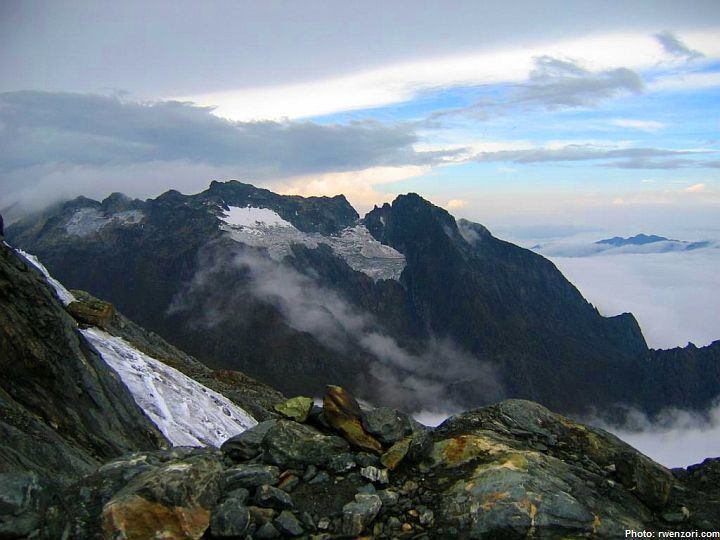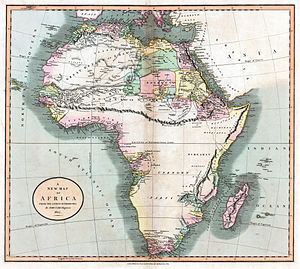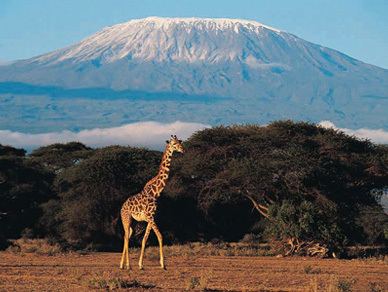Mountains of the Moon (Latin: Montes Lunae, Arabic: Jibbel el Kumri) is an ancient term referring to a legendary mountain or mountain range in east Africa at the source of the Nile River. Various identifications have been made in modern times, the Rwenzori Mountains of Uganda being the most celebrated.
Contents

Ancient testimony

People of the ancient world were long curious about the source of the Nile, especially Ancient Greek geographers. A number of expeditions up the Nile failed to find the source.

Eventually, a merchant named Diogenes reported that he had traveled inland from Rhapta in East Africa for twenty-five days and had found the source of Nile. He reported it flowed from a group of massive mountains into a series of large lakes. He reported the natives called this range the Mountains of the Moon because of their snowcapped whiteness.

These reports were accepted as true by Ptolemy and other Greek and Roman geographers, and maps he produced indicated the reported location of the mountains. Late Arab geographers, despite having far more knowledge of Africa, also took the report at face value, and included the mountains in the same location given by Ptolemy.
Modern identifications

It was not until modern times that Europeans resumed their search for the source of the Nile. The Scottish explorer, James Bruce, who travelled to Gojjam, Ethiopia, in 1770, investigated the source of the Blue Nile there. He identified the "Mountains of the Moon" with Mount Amedamit, which he described surrounded the source of the Lesser Abay "in two semi-circles like a new moon ... and seem, by their shape, to deserve the name of mountains of the moon, such as was given by antiquity to mountains in the neighborhood of which the Nile was supposed to rise."

James Grant and John Speke in 1862 sought the source of the White Nile in the Great Lakes region. Henry Morton Stanley finally found glacier-capped mountains possibly fitting Diogenes's description in 1889 (they had eluded European explorers for so long due to often being shrouded in mist). Today known as the Rwenzori Mountains, the peaks are the source of some of the Nile's waters, but only a small fraction, and Diogenes would have crossed the Victoria Nile to reach them.
Many modern scholars doubt that these were the Mountains of the Moon described by Diogenes, some holding that his reports were wholly fabricated. G.W.B. Huntingford suggested in 1940 that the Mountain of the Moon should be identified with Mount Kilimanjaro, and "was subsequently ridiculed in J. Oliver Thompson's History of Ancient Geography published in 1948". Huntingford later noted that he was not alone in this theory, citing Sir Harry Johnston in 1911 and Dr. Gervase Mathew later in 1963 having made the same identification. O. G. S. Crawford identified this range with the Mount Abuna Yosef area in the Amhara Region of Ethiopia.
